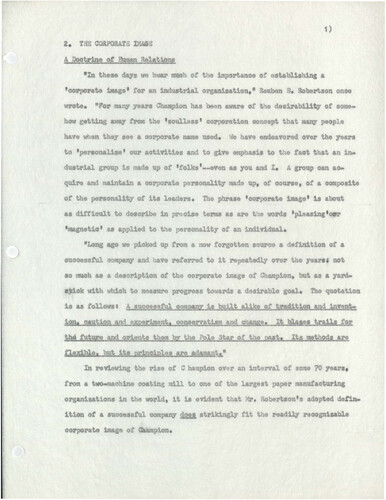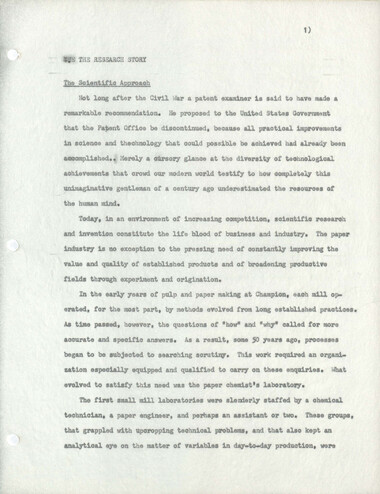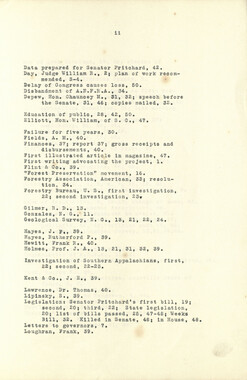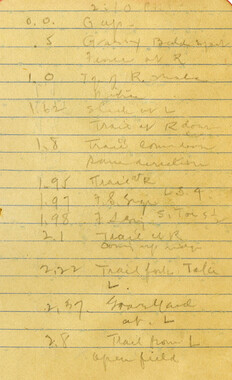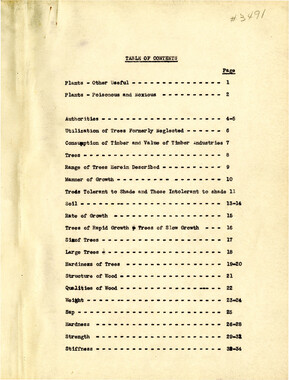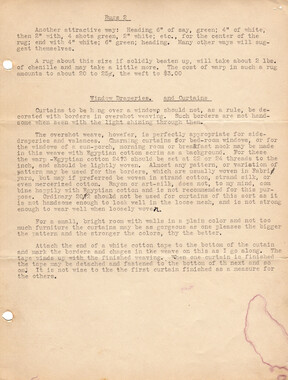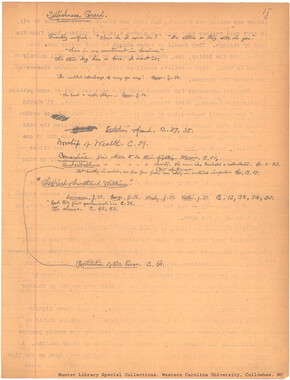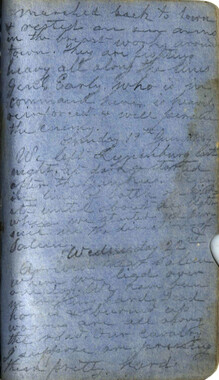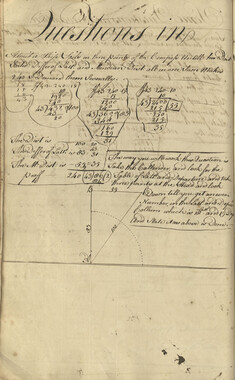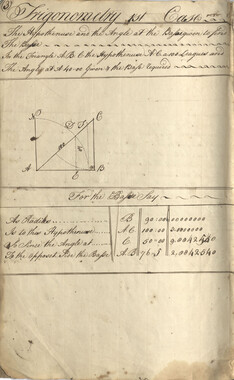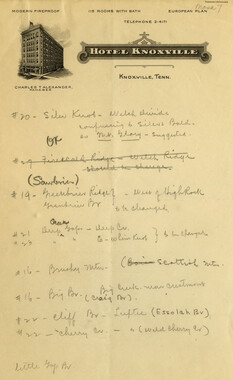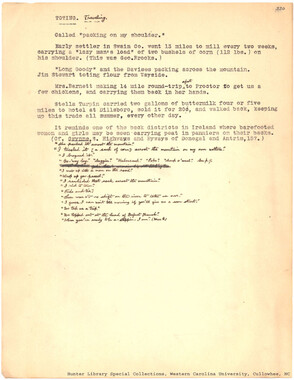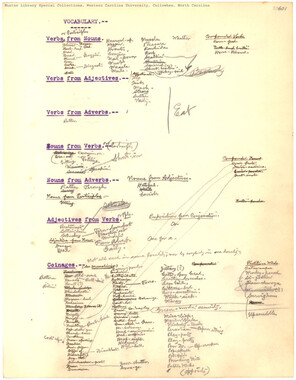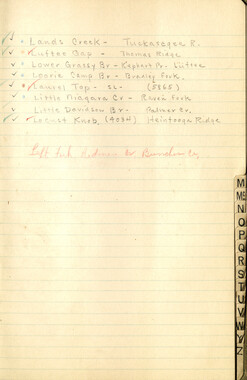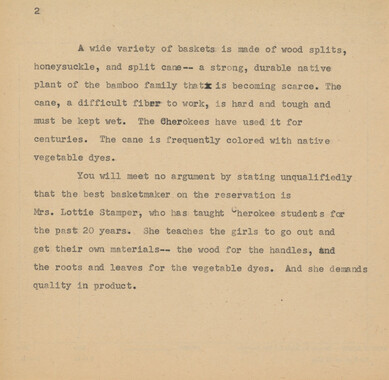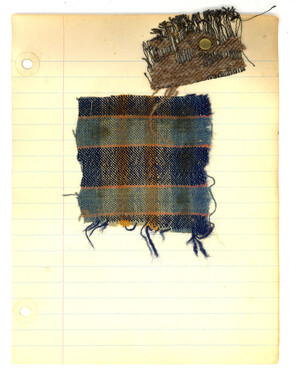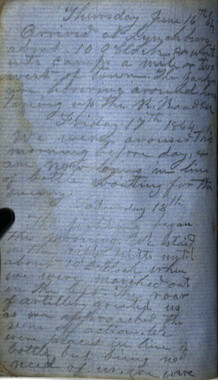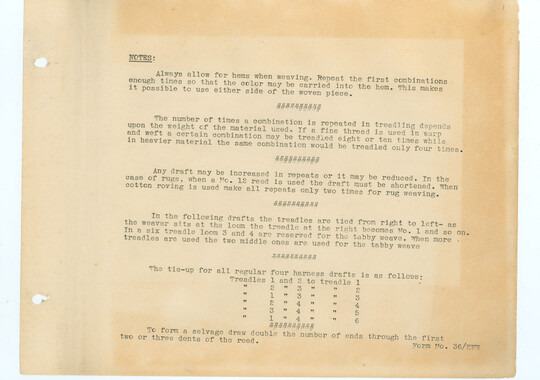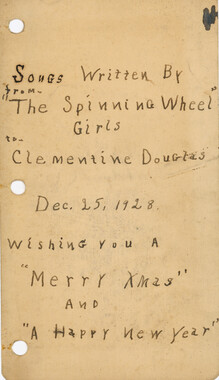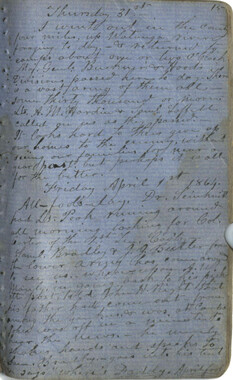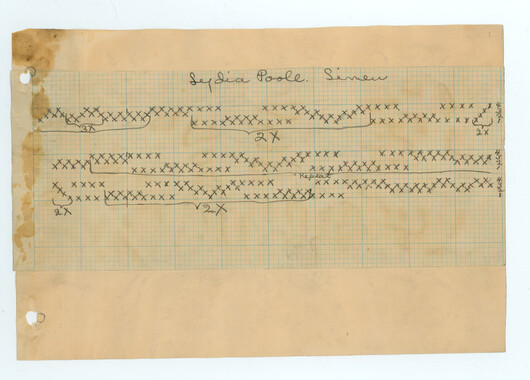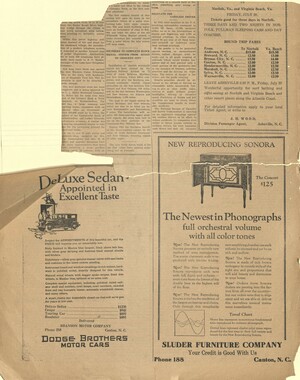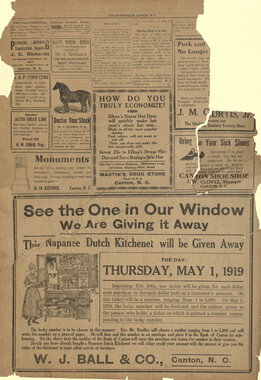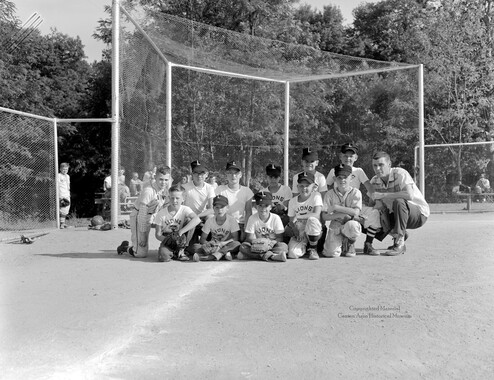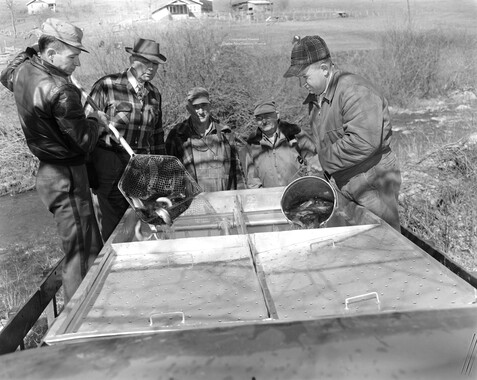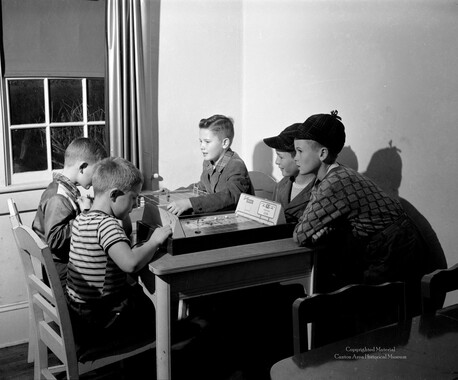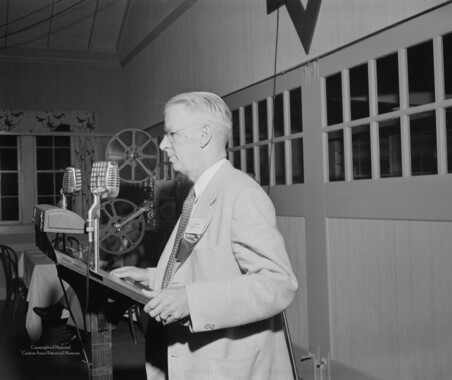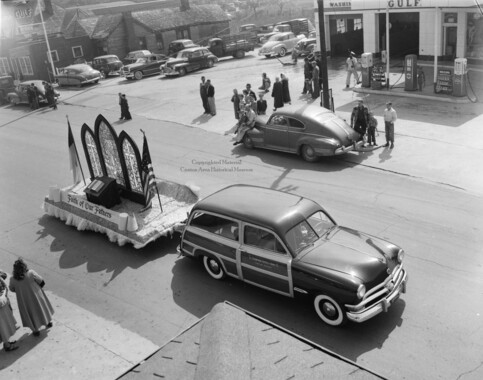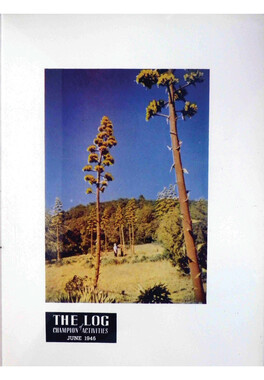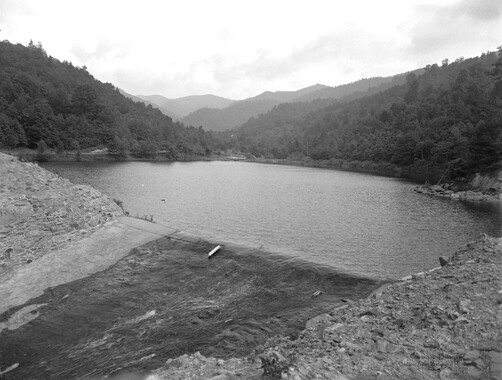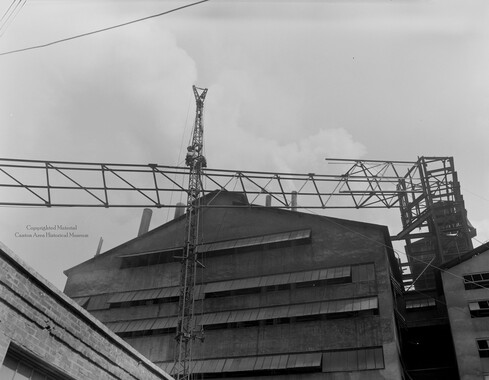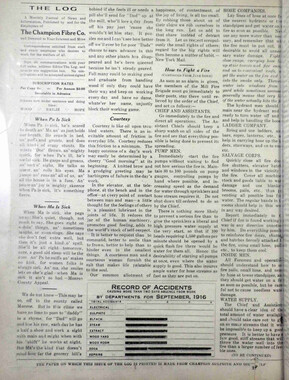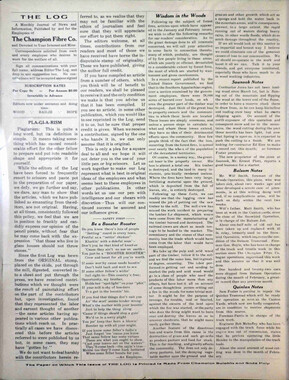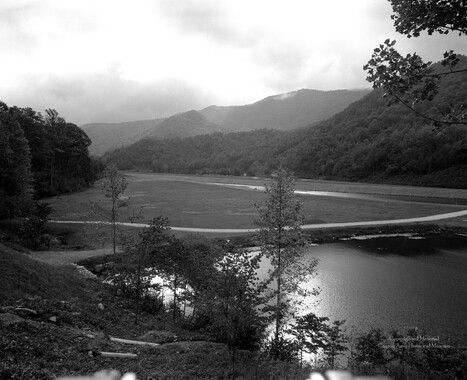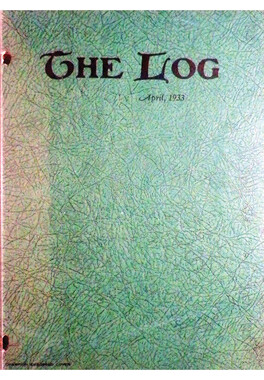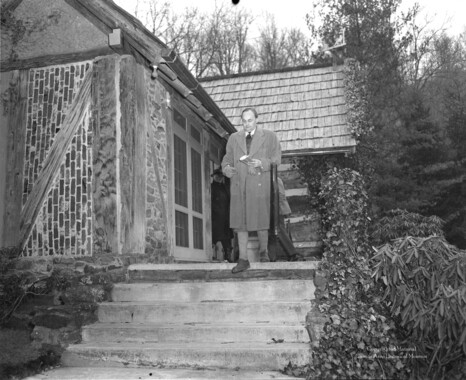Western Carolina University (21)
View all
- Canton Champion Fibre Company (2308)
- Cherokee Traditions (291)
- Civil War in Southern Appalachia (165)
- Craft Revival (1942)
- George Masa Collection (137)
- Great Smoky Mountains - A Park for America (2900)
- Highlights from Western Carolina University (422)
- Horace Kephart (941)
- Journeys Through Jackson (159)
- LGBTQIA+ Archive of Jackson County (85)
- Oral Histories of Western North Carolina (314)
- Picturing Appalachia (6797)
- Stories of Mountain Folk (413)
- Travel Western North Carolina (153)
- Western Carolina University Fine Art Museum Vitreograph Collection (129)
- Western Carolina University Herbarium (92)
- Western Carolina University: Making Memories (738)
- Western Carolina University Publications (2491)
- Western Carolina University Restricted Electronic Theses and Dissertations (146)
- Western North Carolina Regional Maps (71)
- World War II in Southern Appalachia (131)
University of North Carolina Asheville (6)
View all
- Allanstand Cottage Industries (62)
- Appalachian National Park Association (53)
- Bennett, Kelly, 1890-1974 (1463)
- Berry, Walter (76)
- Brasstown Carvers (40)
- Carver, George Washington, 1864?-1943 (26)
- Cathey, Joseph, 1803-1874 (1)
- Champion Fibre Company (233)
- Champion Paper and Fibre Company (297)
- Cherokee Indian Fair Association (16)
- Cherokee Language Program (22)
- Crowe, Amanda (40)
- Edmonston, Thomas Benton, 1842-1907 (7)
- Ensley, A. L. (Abraham Lincoln), 1865-1948 (275)
- Fromer, Irving Rhodes, 1913-1994 (70)
- George Butz (BFS 1907) (46)
- Goodrich, Frances Louisa (120)
- Grant, George Alexander, 1891-1964 (96)
- Heard, Marian Gladys (60)
- Kephart, Calvin, 1883-1969 (15)
- Kephart, Horace, 1862-1931 (313)
- Kephart, Laura, 1862-1954 (39)
- Laney, Gideon Thomas, 1889-1976 (439)
- Masa, George, 1881-1933 (61)
- McElhinney, William Julian, 1896-1953 (44)
- Niggli, Josephina, 1910-1983 (10)
- North Carolina Park Commission (105)
- Osborne, Kezia Stradley (9)
- Owens, Samuel Robert, 1918-1995 (11)
- Penland Weavers and Potters (36)
- Roberts, Vivienne (15)
- Roth, Albert, 1890-1974 (142)
- Schenck, Carl Alwin, 1868-1955 (1)
- Sherrill's Photography Studio (2565)
- Southern Highland Handicraft Guild (127)
- Southern Highlanders, Inc. (71)
- Stalcup, Jesse Bryson (46)
- Stearns, I. K. (213)
- Thompson, James Edward, 1880-1976 (226)
- United States. Indian Arts and Crafts Board (130)
- USFS (683)
- Vance, Zebulon Baird, 1830-1894 (1)
- Weaver, Zebulon, 1872-1948 (58)
- Western Carolina College (230)
- Western Carolina Teachers College (282)
- Western Carolina University (2008)
- Western Carolina University. Mountain Heritage Center (18)
- Whitman, Walt, 1819-1892 (10)
- Wilburn, Hiram Coleman, 1880-1967 (73)
- Williams, Isadora (3)
- Cain, Doreyl Ammons (0)
- Crittenden, Lorraine (0)
- Rhodes, Judy (0)
- Smith, Edward Clark (0)
- Appalachian Region, Southern (2940)
- Asheville (N.C.) (1944)
- Avery County (N.C.) (26)
- Blount County (Tenn.) (195)
- Buncombe County (N.C.) (1680)
- Cherokee County (N.C.) (283)
- Clay County (N.C.) (556)
- Graham County (N.C.) (238)
- Great Smoky Mountains National Park (N.C. and Tenn.) (525)
- Haywood County (N.C.) (3571)
- Henderson County (N.C.) (70)
- Jackson County (N.C.) (4919)
- Knox County (Tenn.) (35)
- Knoxville (Tenn.) (13)
- Lake Santeetlah (N.C.) (10)
- Macon County (N.C.) (421)
- Madison County (N.C.) (216)
- McDowell County (N.C.) (39)
- Mitchell County (N.C.) (135)
- Polk County (N.C.) (35)
- Qualla Boundary (982)
- Rutherford County (N.C.) (78)
- Swain County (N.C.) (2185)
- Transylvania County (N.C.) (270)
- Watauga County (N.C.) (12)
- Waynesville (N.C.) (86)
- Yancey County (N.C.) (72)
- Aerial Photographs (3)
- Aerial Views (60)
- Albums (books) (4)
- Articles (1)
- Artifacts (object Genre) (228)
- Bibliographies (1)
- Biography (general Genre) (2)
- Cards (information Artifacts) (38)
- Clippings (information Artifacts) (191)
- Copybooks (instructional Materials) (3)
- Crafts (art Genres) (622)
- Depictions (visual Works) (21)
- Design Drawings (1)
- Drawings (visual Works) (185)
- Envelopes (73)
- Exhibitions (events) (1)
- Facsimiles (reproductions) (1)
- Fiction (general Genre) (4)
- Financial Records (12)
- Fliers (printed Matter) (67)
- Glass Plate Negatives (381)
- Guidebooks (2)
- Internegatives (10)
- Interviews (815)
- Land Surveys (102)
- Letters (correspondence) (1013)
- Manuscripts (documents) (618)
- Maps (documents) (177)
- Memorandums (25)
- Minutes (administrative Records) (59)
- Negatives (photographs) (6090)
- Newsletters (1290)
- Newspapers (2)
- Notebooks (8)
- Occupation Currency (1)
- Paintings (visual Works) (1)
- Pen And Ink Drawings (1)
- Periodicals (193)
- Personal Narratives (10)
- Photographs (12976)
- Plans (maps) (1)
- Poetry (5)
- Portraits (4568)
- Postcards (329)
- Programs (documents) (181)
- Publications (documents) (2443)
- Questionnaires (65)
- Relief Prints (26)
- Sayings (literary Genre) (1)
- Scrapbooks (282)
- Sheet Music (2)
- Slides (photographs) (402)
- Songs (musical Compositions) (2)
- Sound Recordings (796)
- Specimens (92)
- Speeches (documents) (18)
- Tintypes (photographs) (8)
- Transcripts (322)
- Video Recordings (physical Artifacts) (23)
- Text Messages (0)
- A.L. Ensley Collection (275)
- Appalachian Industrial School Records (7)
- Appalachian National Park Association Records (336)
- Axley-Meroney Collection (2)
- Bayard Wootten Photograph Collection (20)
- Bethel Rural Community Organization Collection (7)
- Blumer Collection (5)
- C.W. Slagle Collection (20)
- Canton Area Historical Museum (2110)
- Carlos C. Campbell Collection (462)
- Cataloochee History Project (64)
- Cherokee Studies Collection (4)
- Daisy Dame Photograph Album (5)
- Daniel Boone VI Collection (1)
- Doris Ulmann Photograph Collection (112)
- Elizabeth H. Lasley Collection (1)
- Elizabeth Woolworth Szold Fleharty Collection (4)
- Frank Fry Collection (95)
- George Masa Collection (173)
- Gideon Laney Collection (452)
- Hazel Scarborough Collection (2)
- Hiram C. Wilburn Papers (28)
- Historic Photographs Collection (236)
- Horace Kephart Collection (861)
- Humbard Collection (33)
- Hunter and Weaver Families Collection (1)
- I. D. Blumenthal Collection (4)
- Isadora Williams Collection (4)
- Jesse Bryson Stalcup Collection (47)
- Jim Thompson Collection (224)
- John B. Battle Collection (7)
- John C. Campbell Folk School Records (80)
- John Parris Collection (6)
- Judaculla Rock project (2)
- Kelly Bennett Collection (1482)
- Love Family Papers (11)
- Major Wiley Parris Civil War Letters (3)
- Map Collection (12)
- McFee-Misemer Civil War Letters (34)
- Mountain Heritage Center Collection (4)
- Norburn - Robertson - Thomson Families Collection (44)
- Pauline Hood Collection (7)
- Pre-Guild Collection (2)
- Qualla Arts and Crafts Mutual Collection (12)
- R.A. Romanes Collection (681)
- Rosser H. Taylor Collection (1)
- Samuel Robert Owens Collection (94)
- Sara Madison Collection (144)
- Sherrill Studio Photo Collection (2558)
- Smoky Mountains Hiking Club Collection (616)
- Stories of Mountain Folk - Radio Programs (374)
- The Reporter, Western Carolina University (510)
- Venoy and Elizabeth Reed Collection (16)
- WCU Gender and Sexuality Oral History Project (32)
- WCU Mountain Heritage Center Oral Histories (25)
- WCU Oral History Collection - Mountain People, Mountain Lives (71)
- WCU Students Newspapers Collection (1923)
- Western North Carolina Tomorrow Black Oral History Project (69)
- William Williams Stringfield Collection (2)
- Zebulon Weaver Collection (109)
- African Americans (390)
- Appalachian Trail (35)
- Artisans (521)
- Cherokee art (84)
- Cherokee artists -- North Carolina (10)
- Cherokee language (21)
- Cherokee pottery (101)
- Cherokee women (208)
- Church buildings (190)
- Civilian Conservation Corps (U.S.) (111)
- College student newspapers and periodicals (2012)
- Dams (108)
- Dance (1023)
- Education (222)
- Floods (61)
- Folk music (1015)
- Forced removal, 1813-1903 (2)
- Forest conservation (220)
- Forests and forestry (1197)
- Gender nonconformity (4)
- Great Smoky Mountains National Park (N.C. and Tenn.) (181)
- Hunting (46)
- Landscape photography (25)
- Logging (119)
- Maps (83)
- Mines and mineral resources (9)
- North Carolina -- Maps (18)
- Paper industry (38)
- Postcards (255)
- Pottery (135)
- Railroad trains (72)
- Rural electrification -- North Carolina, Western (3)
- School integration -- Southern States (2)
- Segregation -- North Carolina, Western (5)
- Slavery (5)
- Sports (452)
- Storytelling (243)
- Waterfalls -- Great Smoky Mountains (N.C. and Tenn.) (66)
- Weaving -- Appalachian Region, Southern (280)
- Wood-carving -- Appalachian Region, Southern (328)
- World War, 1939-1945 (173)
A History of Champion Papers, Chapter 2, The Corporate Image
Item
Item’s are ‘child’ level descriptions to ‘parent’ objects, (e.g. one page of a whole book).
-
Chapter two of Corydon Bell's 1963 history of Champion Papers covers the corporate image. This 18 page chapter underlines the importance founder Peter Thomson, and his son-in-law Reuben Robertson held to employee fairness and satisfaction. Among the topics included are profit sharing, safety programs, and communication which led to the monthly publication The Log. Also covered is the opening of the YMCA July, 1919 which offered an array of activities for children and adults. Air and stream pollution were among the negative aspects of corporate image, but Champion took steps, often costly, to reduce pollution.
-
-
r 2 , 'l'H CO. POR 'l'J:J •In the e h wrote. tt o an indust rial org ny ............. .,. Champion has how getting a~ hav vh n th y se the ' oulle s ' 1) p ~t nee or stabl hinc , " uben B. bertson ono r ir bill~ of o - people • otivities and to i~ ovrthey rs ph 1a to th t at that n in• due trial group i de up of •tolk 1 --e en s 70u and. I . group can o-quir nd tain a orpor te p rsonali y de up, t cour , o posit.e ot the pe onal.ity of its le ders. The phrase •co ra t is about as dU'tioult to de o in p oise a re the rds 'ple inc ' 1 et ' pplied o the r onality or an individ • iok d up fro a now forgot n ouroo rrr nd h e d to it pea 0 so oh do ariptio of th corporate ok with which to ur p s s follow 1 ant, conservat tion of a but a a 7 reihe q o tion for In pion o n int l"V'al of o 70 ar • f or ani tion in th rld, it 1a vident th t 1 • oc trikin fit the ad of p1o • dop d det inr gn1 ( 1 ) ( 2) At the tum of th& centuey Peter G. Thomson laid a foundation ot tradition for the oompar1,11 a &radtion of honest and forthright raanagement, or sympathetic labor relations, and ot dynando prog.raess through vision and invention. It 1B dou~:cilit any industriAl organization in t.he countey. or simUar age and. siza as Champion, has so wall uintained its tradition. al polioiel ot management. As did its tounder• Champion leader• have oon• tinued to effect its industrial growth th~ugh well considered at~lti~~" and by adapting established procedures to a cbas#~Jg-ae~. In .t'ollowtng the long course of Champion' s $:x.pans1on, it is quite eVident that each torward step has been a logical development £rom the previous one. •hanever practical and economic considerations peftlitted. Cha~1on*s methods in zu.nage11ent have always been .flexible, whether 1n coping 'dth uninvited problems • or 1n voluntarily discarding old teohn1qu~s in order to produce a better product. And f1.nall.y, its founding principles have firmly endured in practice u well as in theory. In a 1922 souvenir booklet unearthed from a miscellany of old recorda in the archives or the Asheville of'f1oe, there i.s pl"inted The Cha.ag1on Craeg. It appears he:re probably in ita origina.l .form; and one would assume from its text and t.ypogral)~ that it was set down by Peter Thomson hintself' a He Believe in the "Champion FamUy, 11 Makara ot Cbaapion Pl'oducts, and that an Organicat1on oan proeper only as its members have Faith and Confidence in each ot.'ler. We Believe in Justice, Thoughttullness. Kindlineaa, Sym. patey and in the Golden Rule aa taught b1 the Teacher of' Gal.Uae. ( ) 3) \ t'l- We Believe that a joyous heart is the reward ot Bofl11111 .. r duatey and that human happinee• ie realised 1n the· aooomplishllent of work well done. Tt/e Believe that Trouble 1s born of Miaunderatandine, that f11aunderatandi.ng is of'ttiaea the product ot Ignorance, and that it is the du~ ot eaoh or ua, regardless ot his rank 1n the organization, to let 1n the Sunshine ot Knowledge, that eaoh dq shall make him a Better !'.& t-Ie Believe in preparing tor those opportunitie• wnioh .t'requently arise. So, the 1Champ1on F~• have adopted the 110t.to1 ·!.J ~{J ")~,. " ~~ # Good Fellowship, • with faith that our Produot• will retleot this Spirit and bring Lasting Satistaotion to our Patrons. Refieotivo of tnis credo of ethical and sooial b liets and o£ nlightened self-interest, is the statement ot Champion's policy as a corporate oitizob, published by management during tho lata 1920s 1n an issue of The Los,: It 1s our policy to make aU appropriate etfor'ts 2 To assure that our oompany d its paoplo a.re dequatol.7 represented in tho public oruma part of • but n ver great-er than, the oo~~on good. To cooperate as tully as possible 1n the foundation ot public policies qy tr ely supplying perti nt in!ormation regarding o r rola and stake in thos policies. ) 4) To encourage Champion man and women to make :vaUabl within tho 1 mits of idivid.ual. job demands and as a tter or respons ble citizenship their time and talents 1n contributing aotively to the more effeotiv operation or our local, state ar:d federal governments. 'fo d8l'llonst.rate before all men our conviction t at tha interests of' free men are mutual and ust not be divided by lines or class or special. interest. It is significant that this publication ot aompaqy policy was supplemented by an editorul statement which has been repeated in the spoken add written observations of every Champion president. It is here quoted in part: Often a corporate business is typified as struggling !!&.~ something--as holding th.e rampart of a lost cause. It is to Champion' s credit that it has consistently struggled ~ son11athing. • • The Champion idea is to work . to benefit the ma~ and not the tew. Peter G. Thomson 'flls a true pioneer 1n th9 field of uman relation in industry. He provided an inspiri...?lg example and a praot.ioal leaderahip in this tiel for those who were to carry forward the executive r sponsibilities tor Cil&nlpion. Reuben Robartson points out; "Cha p on many years ago br:~- came well known· nationally as &-nl.eading exponent ot industr1e.l relation policies that centered around the word .. consd1erat1on"-a thoughttul, sym.. pathetic consideration for the dignity and wel£ara o the wor ar, whether he be dressed in overalls or in a hite collar." ( i _) 5) Perh ps the best indication or the success of Chmpion • s labor re .. lations policy, both in concept and aduJinistration, 1s that tho majority ot the oompan,y1s employees in eaoh o£ its three W.visione has never voted in favor o£ organization by national labor unions. This employee loyality to Chhmpion over a period o£ 70 years oertatnly can bo attributed in large degree to the comp~•a promo~ ot understanding management's policies among amplo,-ees, combined "td.th intel.Ugent utilization of employee' .s attitudt9s as a guide to ma.na.genwnt. It ha.s taken man;r decadet .for m<>st corporate industries in the United States to adopt and ett'eotivel.y ~t.}t.i\Qt · practice the human relations attitudes in which Champion pioneered. Onl7 now, in late 196), are organized labor leade-rs admitting that 11unions are not as important to American worken as they onoo were." Otter twenty yoars ago Reuben !tobertson obl!lel."Y'ed • rt A lot or tendenoies toward eoerei ve Ul will; as many o.f us have long recognized, are due to our inability to get a really aeourate and sympathetic estimate of the attitudes, need, aspiration, satisfactions, and frustrations of our workers. Barriers, like briar patches, easiJ¥ and rapidly grow l.»tween us ~nd our employees. And we know that to promote among our workors a clearer understanding of ru.nagem.ant. policies we continually need as oleu an estimate as possible of workers• attitudes. Naturally, this 1ntormation must be obtained through dependable channels, not through 1oompany stooges' and 'spies. • •To obtain suoh information Champion long ago initiated a syst~ ot personnel counseling. The relation$h1p or the counselor to the employee is rather liko that oi' a dootor to hie patient. The counselor detects evidence of dissatisfaction, obsessions, misunderstandings. deteriorations o! performance and ~oraala, and strives to eliminate them to the satisfaction or 6) the employee and the comp~. The interview may last for an hour or more, and is completely and oonvtncingl;r oontidential. Company management i.e in· form~ about wat complaints are made; not who makes them. No emplo19e is intervt&d against his will. Very few object to airing their grlevancea. • • "Brie.tly S'Ul'lll"'Ulr1zed, a good. industrial relations program. should include theae principles t Hol.d the initiative I Do the things we know should be done before it is demanded of us, and do them in a spirit or ungrudgi.ni cordiality. 1.levelop CQOperative good wlll. A.void aloofrtess. Catch and correct undercurrents ot discontent while they ate still rivulets and before they reach the fiood stage and. set. beyond control, SystetU.tize in-. dustrial relations. but don ' t allow the to b&come mechanical or impersonal. Keep ' em. Human t•• Qn the, fia.ttr~ "igE;t, It has been one of the basic principles of Champion management that employees should hare directly in the results o£ theil" efforts to an extent that is feasible. To make this possible the oompanJ est blishad the Cooperative Earnings Bonua 1n 1938· Under this plan. average hourly earnings ot emplo:raas auto:mat.ioally ino;c'ease as the quality and quantity of p~oduotion improve. Another adva.noe t.o>-rard employee partioi~ tion i.n co• paey o rnings was t.he or&ation of the Profit aring Benefit Progra • this broad program vas designed to replace with an oTo~all profit sharing plan a number of separate employee benetitsr such as retirement 1ncome1 do th benefits and complete medical coverage. Th plan has not only r diced tho long~range fixed cost of Chnmpion ne£1t plans, but has resulted in n increased r ) ) 7) •profit consciousness" on the pa~t of all employees, strengthening turther the feeling among Champions or participation in and responsibility tor the •~ooeas or their oompa~. other employee benefits of long standing provided by Champion includes a.ptitude placement tests J on-the-job training courses leading t.o advancement in individual earning powerl sataty etVJineered working conditions; a credit we ~t,.()Lf·~f ~d , .fcc/ union that pNvides funds,.~ · llll'llM8MQ3111191Hlt~r emergency neads; tho encourage-ment ot home ownership by employees through long.tem, lO\i interest-bearing loans-helping not only to st.abilize employment but also to create a. more Nsponaible o1t1zei'1Sh1p. To these advantagea <».n be added low-cost hot tood service at the Mills, and ~-sponsored recreational tao111t1es tor emplo, yeos and their families. 'l'he results or Champion's thoughttul.ly planned human relat1ons have been gratU'y1ns. the ffCbam.pion FamU7" o,r 1ntell1gent and inf'oNed people stands as one of the com~•s greatest assets. contributing immea~urably to the success and the growth or tha compatV• Cha:ulpion's record of oontinuit.y' or GllPloyment. has consistently remained above that of the entire paper U. dustl"f, which. as a group, oan claim an excellent. performance in this l"'• ga.rct. A rigorou.sl.T maintained aa.foty progra.m, which all employees nave en- Y e t~p rl r.J { tr.-.J thusiastice.ll,y supported• has given Olampion an outstanding •~tow accident incidence. Frequency of lost-time accidents at all thJ.oee D1.v1s1ona during 19.56, i'or e:ampla, was 1.56 per million man hours wor-ked., while the average rate tor the pa.pexo industry was then about 11. 70. In 196J, the accident fr-equency rate at the Carolina Division was o.6o per mUlion an-hours. l (") S) C:Omm\inica.~io"s.' A. caati.Ye .'l'oq,l., A.s Reuben Rober-tson haa observed. in one of his many 1 paporatt on tne h1etor1cal aspects of Ch&mp1oft: 110n9 or the adamant prinaiplet htpl.ioit Ul the specifications tor a successful oompa.n;y is that t.b.e:te m:ut be team l:ort; ami, as 1t0 know, good toam work rastt~ on the foundation atone ot s)'mpa.thet.io communication b$tween managellllellt and me:n. 'l'be expediants used to implement this pl'inoiple in dally practioa are va.ried aad tlexi'ble. One ot the plans adopted by ChAmpion as a 'tool• in oreatug und.erat.anding, cooperation and teantwerk was the publication of an emploY"'e ugaUn.e (ol!" house organ,. 14 you pll'ef'er) in whioh the h'wu.n sooial upeote ot our oo•unity lite *" given emphasis along with etiol.ea that were WoJ~mative as to Champion•a business actiVities. We t~aDt.ed eVet::f wo:Pker to be 'saturated' with the m.a.naaement point. of view, I!IV'eey man understandin& the prineiploll o! ind:u.str1al survival 1n the competitive world or· tree enterprise., With t.bh 1n mind, at an ea.r)3 date we adopted •• 0\1.1'1! slogan to el'llpbasize this spirit the w:rdl tooopen.tion and good tallowahip.• In this at.mosphera 1\1'? MlB was bo.-n.i •At thot t.tme this publication made its appea.re.n~ Ch&lllpion had no paid swt with which to 0&%71' on the job ot ed.it.ing and producing the perioclioal. 'rb.e ed.itor-in.ohiet was A. o. 1tlood1 who was then au.pertn~Jldent ot the Cant.on .ftlph1te lllUl. Being .the son ot a preacher, Mr. ~1ood hAd apparently 1Meri:t .. ed a talent tor ~iting, and was especially akilltul 1n dealing with subjects that had. their h'Wilan, friendlt aspeots. Pl'eparation of 'fl\e Los vas dona b.r lamplight af'tsr his day• s work at the mill had baen completed. • • ·rna publication ot !~e Log (aloug with its Hamilton brother, ol"iginal.'q known as 1h& Ohantp.1.on Spirit) wu a pioneering job and,;,~~ I knov, was the first ot ita kisd in the paper industry.• ( ) ) 9) At least in paz-t, 1nspmtion fir the ostablishr!.ont of' The, Lcui as an employee periodinal came from An W'lU.sual let.t.&r 1>tritten b'rJ Joe Milno• a Soot who was one of the mlll eloct.rioia.ns .at Canton. 'l'he contents ot his letter ..... unfortunately lost-etlpb.asiraed the "Champion Spirit." HowsYer1 too f'ollow:tna "pome• * written by C..r1~e Liner, a Cb.am.pion t:1l!tplo,-ee ot tho day', 4lld published ln one of the first issues ot ~e,k21• rotl&ots mnoh of Joe ~fLlne 1 s philo opbT: 1HE CHA..'i:PEEN sp;~K~ Last wale l seed. a ganc ot men wben I went thru the mill A1lu1d.dl.&d U.p aroW'ld. a banoh a Wf1n f'it to kill> An' I dun :heord a joke they splfllllll jest ao ! went atones A gang like that mos• always means $'111l work will aura go wrong,. Jest then I aeed the Boss 4Um tn-.Wben he oum thrn the door their taees changed e~ssion, hit sure Jlad~ 'f4Y' heut feel sore. To see th.-t p.ng dUpt)rsin • ...... soairt as :rabbits in thou .Q1ght-... then I woke Up1 tot> :t had b::ten c'bteamin' ot th.1a sight, Since the Champeen Spaevtt t 4 oum do\m to our mUl to ~ta;r l!e '• taught us a.ll a lesson-he Je•t leems to ll&Ve full sway, You never aae a gang like this one that I dreampt about And bosses do not have to O'Wil and put the men to rou.t. Iou tind each in-di·'rid-u.al at wol:'k, for 1t1s his plan To live an h¢nest, happyllte and be a batter man. !fe Ia education hu.n.gry 1 and. he t.l'W&yiS has a thi:r."lt For knovlefge ot the st.utt that we are oallin • satety f'irat. tho super and t...lle fo~ are huntin • every leak- Eaoh month they gits together Jest to hear eaoh other epeak ot how theil" work is going and of methods better still, r ) ) ) than they use at present at their work down at the mill. The lesson that they want to leu-n is how to count the cost ot work 1n each de:p4rtment so no mone7 will be lost. 'l.'lulae foHmen ouss and duouse all the p,-obleme of the day, 10 ) And the Chanlpeen Speerit •s with the them every T4eetin • night they' say. The men aro not behavin • like a low down l"'wdy mob Forget tin • or tbeh* manners when they get down on the job. They are saying "please" and ttth&nk ;you'' in a way that llill amaee• A snx>oth1n' out the rough spota in a way that surely pqa. No matter what his work is you wUl find each en7ployee \iorkin' jest as ha.N as though hia name was Pe~r G. mditor ·ibod and his two associates, in the first four-page iasuo or The ,to,, set !orth the intentions ot the publication under the mast-hea4 t TRE LOG A J$.onthly Journal o£ news and information, published by and. .for employees or The Cb.ampion Fibre Co. Devoted to Y'OUf' interest nd mine Correspondence aolieited r~ each and ever, employee who des1rea to wotk tor the welfare of all Sign all eo!llliluniaations with your fUll naina. addressed ~itor l'ho Log. and drop in any suggestion box. o contributions will be accepted unless signed Subscription Rates P r Copy Oc -- Per num $0. 00 Invariabl3' 1n Advance J \ ) '-- Ed1to~s no• under sent$noe and doing timet Wood .... !3a111e ..... Os l:nme 11) OUr name w. s selected from m4n1 others on account of its peouliu signitioanoe • On board ship the I4g" is the record ot lo· itude and latit do.-or, s th y say up at The _Qbam,pion Coated Paper Co~,. "Where you are at." Its record indicates"' tb•t~ --~~ port the knots untied (or problems sol vod). It also tells the Vtfssel 's oo\U"se in what direotion you are sa111ng1 .and any unusual aighta, espeoiall.y one that might indioat. tnat some brother mariner is 1n distress. It further reoo~ds What steps are taken tor his relief and the result ot as• sisto.nco rendered. It is a history of the crew, pass ngars and freight during the voyage. The name was also suggested by the .taot that the •Log• is such n hportant taotor in the malu.faoture of pulp• tha .foundation of the 1ndustr.r rosting upon it. Anyone w1l.l recognize this Log as raw material. Favorable tesponae to 'the log by Champion employees was immediate and very gratitying to :l.ts sponsors. In i'a.ct, reader 1nterest aeelllOd to inorease a the little houae organ 1ot under w~ with each succeeding issue. ~r.rona enjoy&d the stories and pietura , the latest news of Champion managerial aotirtti&s, and of course the h1.\11110rous items. Froa the stut, the observance ot safety pl'"eoa.utions in th$ mills was strongly tressed, and the ed.itora aoon began printing in each issue a imple ob.art showing record ot aooidenta (causing more than a two..day absence from work) occurring in the vanou depa; rt.Jr&&nts. A slogan waa adopt-ode 1Think, Talk, and ct Satety-Filtst... \Than the •satet:r idea ft was firmly ettabl1shed, the editors began a well conducted. campaign against "W&sto 1n its varying aspects, pointing out the oostl.T et. !eats ot waste• not only as it affected nag~ent but also its repercussions • upon ozuploy-ees. ( ) ) 12) l'hree ;y'$a:rs t.fter the appearance of the ti:rst issue or In!. ~lh r$• cognition o! loyal 4nd outstanding employoe1 became a feature in its as ··unole" Stamey a.nd tnen, in 1917, :t'i.tty- tou.r year$ of age , wont the hono1' of being t~st mont1oned as a member ot "Ch.ulpion' .a First Rag1aent" ...... a ·~ or tore~nor ot th$ "Old 't:tmera Club•" which ha111 stnoe develoflld. into an in.portant i'Acto:r in l.abor-m.anagem.ent relatioms. Mrf sta.mey joined the Ql.ampion ranks 1n 1906, tm~.i had never been 1nvoJ.v&d 1n an aooident. lib ap. peared proudly, in tb.e neAl a.s weU aG in halt tone iD The Ifoa.ae an example of the t:rtle Cb.ampion Spirit .• ~l'otrt a modest pubUoa.t1on1 with its 11Mple newspapor format, The &91- thia. first btoad oo~nmica.tions eff'G1"t by Chuipion-"""gl'$W over the years in aoope and in nunibar ot pages. Af'tol' lf6 yeva of' publ104\ion, tho ti.nal issue ot ;i'ge .Ia& appeared 1n April 1960 as a handsome momoria.l to l\Qu.ben a. Robe~ sont J~.. During its l..ong lite th:U C~ion house organ lost bu.t on.e isaue 1 tMN was no lp£ tor Jantl4ry 1921, a I.TlOnt.h in wni.oh the Ca.nton. mill was anut down. Taking the place of the disoonttnued k9s as a monthly eMplot~e publ1oa.tion itt a liva:cy- t.te\f'S sbe-et. eall$1. ~· Under this title. Chiaa is pu'bl1sh~d individua.lly by each o£ the three Cha.'Upion Oi visions. ~~unication within the organization bas boen the source ot much of Champion's ool'porate $trength. 'l'he ••Dinner Crowdtt ot :mUl executives. meeting in dail;r conclave. has l»en an institution of very- long standing at all three plants. In 19)5, <h&..'llpion em.ployeea who had been 'iilith toe Ca.ro. lina Division to:r 25 years, organized the "Old Timers Club» with 70 charter me~rlh Now, 28 years later, theN are over 1, 100 l!Waibers, arun,y o! wn.om attend. the amual meetings of the Club at Camp Hope. The reunions not o~ ) ) 13) bring together in renewed fellowship many seasoned 01ampions• both :re .. tire and active• but, in the after dinner spoeohea of top executives, provide the m.era.bers with news of Char:tpion's f0&rly aoh1evements and its plaNJ for the future. .fuen alliam M. Lehmkuhl, vioe-prosident and general manage:t of the Carolina Division, recently rsi'arred to the Old Timers a:! "the back• bone and sinew o£ strangth at Champion," he wu speaking of them o.s .ambass...,. dors of Champion's good will wno, together, re~sent almost 30.000 years of the admirable tradition th.ey have helped to ~reate . Since about 19.55 Ol.a.mpion ma.nagement has worked at the di£fioUlt and 1 V..vj)u rt·a.,,i higlly ~ant task ot promoting a comprehensive employee oommunioations programz designed to keep emplo~as at all levels abreast of developments t"t. '"'c,A-1'\ within the oompan;y as they coeur. tihinellt.q positioned amng the 1\UUlY im .. pro~menta made in this field is the Chapaoo Council. !his Council operates in a serie ot .fiVE~~ inf'omatiott-sha.ring conforenoes, of th.reo days each, at Lake .L.Ogan, North Carolina. Some 100 members of Champion management attend each conteranoth In general., the pl"'grAm consists of two major partst i'irst, giVing and interpreting ini'orroat.ion a 't»ut the operations ot the oontpal\Y; second, obtaining opinions and suggestions about company prob ems. Tho objective of the cQn!'erenoes is to hlprove uncleratanding of Ola.mpion operations, . problem:~, and desired goals, and to aid 1n building suparvisoey personnel in depth to :maet futllre organ1ca.tional. demands created by company growth. In all of Cha.mpion • s ao r:mnica.tion effo:rts there bas been constant emphasis on the fact that, in a broad but very rea sense, tb.e 'lla.mpion •taaa11 is comuosed of four distinct groupsl sharaholde:re, Champion people anct their fb.miliea, Champion's ouatomars. and the company's ne h rs 1n the co~ties in which operations are lo bd man gelllent usUt., the success of Champion as a corporate oitiaon is measured by t e extent to which 14) it £unctions to fulfil the respective needs and desiras of eao, of e four groups. It one of tb.e group gains t the expanse of the other , all wUl cease to benefit. If all cooperAte intelligently and with ood ·~, the inevitable result is th.at all will gain. The Champion 1X• In an address given at the celebration of the 40th anniver ary of the Champion YMCA in 1960, Reuben B • .Rabe B&n said• • important part of the oo~rate image which Mr. Thomson oreated for Champion was a sincere and de. vout interest in the Cgristian religion, not only as a bbath Day a.otiV1t7 but, even ntOre important, aa a week-day l"Ule of conduct. • Thomson was t. very generous suoporter of his church in his home to-vm of College Hill on t.he outold.rts of Cincinnati, and was most faithful in his attendanos on all churoh activities. When it was $uggested that Canton needed a oo~nunity enter to be conducted under the auspices of t he n·1CA, M:r, 'l'ho on im::nadiately beeamo an enthusiastic advocate of tke plan and extended hi tull influence in favor or supplying the funds neoessa.ey- for the oonstruotion and equipning ot suitable building. • • "As you know, Peter G. Thomson was the organize~ and "daddy• or tha OuL~pion aotivi ies. but few of you had tho privilege of nowing him intim.'\ tal;y. He was a modest, sincer0 1 Christian ganitlema.n. who had vision and actioal sen e or com ercial ~ues. Through the application of hi for busin sa managen1en , he bacQJ'Ile rospe:roua. But prosp rity never changed. the estsential kindline s of is natur nor is inter t in an, al"dl.e ot hethe they were in o er lls or were of t e so call white colla. olaas. It could readily be said or him, ao it m or Peter Cooper who many years ago org zed. The • op r Union in New Yorlh "Here is a n o nave owned a ) ) ) 15) dollar be could not take up to the Great Hbite Throne ••• 8Mr. Thomson was far ahead or his fellow 1nduat:o1a.lists of his day 1n his conve:reion of ~~ SEir1~ into constructive progrru's of ~o~iog tor the betterment of his associates. His pioneering work in this field is a. matter or continuing pride tor all members or the Q1ampion organization and has made its imprint on Ch 'l'lp1on policies o£' tod.a3, no ly 70 years after the start or operations. Consideration for fellow rorkers has beoome a Champion tradition. "The formation or the Champion "YK was a project he sponsored with great enthusiasm, and it betokens his enduring interest 1n the three phases of *Ytt activity: Spirit, 11i.nd a.nd Body. 11 'l'ha Champion ll4CA wna bogw1 in July 1919 and was aocnpleted the f'ollov~ g ye .r. A celebration of its dedication was held in 1920, from April 20 to 25. Hith the sponsor, Peter G. Thomson. in a.ttendaneo, it. proved to be an exciti~ and gale tive days. Entsl'tainars, eng~ed through the Piedmont Lrceum Bu=eau, included such o lebrities of the d41 ~s age Fredericks , Danish violinist, and t;;thel "pense, drrunatio soprano. There have bean instances in which oom~unity projects have not survived 1n the spirit of their inception. This 1s far from true in the oase ot the Cha.mpion meA. During th.e month. ot ay, following its dedication, 121575 persons ro st.d.d to have passed through its doors. Forty yoa.rs later, Mr. Robertson co~~ nted upon the historic success or Canton's community oentert "A roview ot "Y" attendance records shows that there have been, in typical n:onthrs, bet 10en :3() and 40 thousand indiVidual USEtS or the ttyn facilities, which means app xima.tely 400,000 per yeara or, in the 40 years or its lite, 16,ooo,ooo instanc s or use. This st tisti al r cord speak for itselt. 1'he "Y h in daily operation come tul.ly up to tt:te hope and expeatatlona ) ) 16) ot those who sponsored. it.,. Bu.t progreal means ohanget a eu.betitution or the new for the old. Some\izu dlU"inc 1964 the hiatono "I' ,t"-'thiatle served so •nt Ohanapions, will be to~ down to make place for a building that will house another great paper mach1ne. Supplanting S.t in CantQn wUl be the Robart.aon Memorial 'XMCA, an ult.l"aiilllt10datn1 ha.l.t-million-d.ollar etl"UotUl'le that wUl bo one ot the finest ~ the nation, for oitiea under 1001000 popu.l.at1on. 'the new buildiDg, w.lt.h it• so.ooo teet of tlo(JJII $p&Oe a.$ oompalled to the 14,000 a:nUable 1n the or1a1na1 at:ruotut'et wUl otter ~~t,oM*Il...,e_•.t . fa.oU1t1es und.ream.ed ot 1n the days of Peter G. Thomson. Ggmot;nz the t1ndea1n.bls Some J"8&H ago, Reu.ben Robertson o~nted on the .faot tbat lQ'drogen sulphide t relaa.sed to the atmosphere from mUl flue• at Canton during the pulping or pine by t.he kratt process "has given the l'llill.s a repUtation for beiag rather 1tlagrantly fpagl"ant. ' And whUe we must tSOI'ltess that we do resemble, to sol'.lle degree, the rose behind th.e garden wall, 1n that ov presence is known e'V'en thought.we can't be seen, stUl we are paintul.l3' aware qt ow- ehortooming and are making p:rogl'tfaa towards oor:reot1on. • .• Air and st!'eam polut1on, two undesirable teatUPEts or Champion•• corporate 1mag , fo-:o some ;rears have been subjects or public oe~m and ot company oonoem. An inceptive pwgra tor the ab&te•nt of these annoying phenomena wu under wa:y in the 19~11 but such a program requiros the out.lq ot substantial swna or money, the exercise of many teobnioal. kills, and, abon all, ti.nle. It was around 19, that Cha:npion pioneered the sprq .. type uelter f'urnaoe at the Carolina and Texas plants, which great17 reduced dust and. smoke.. Ch.ampion also was a to:rerunnel' 1n the industry with the use 17) or chemic re ants to remove d1 agreeable odor r staok gases bef'ore the7 are diacha ed into the atmoe_ here. This deodorizing treatment involves costs in exoeas of' $60,000 a a.r at the Canton •ill alone. On April )), 196), the Champion ard of' Director• approved an eXpenditu. re ot 1,400,000 which wUl enable the Carolina Division to progreas re rapidly 1n its air am stre improv nt programa. In the field. ot air 1mprov ent, pulp mill modernization wUl proVide tor the installation ot eq,u.ipllent tor the oXidization of black liquor cont&1nin3 term1nal ohetdoal aubstanoea resulting f'rom. ping operation by the krd thod. This pro-cedure 11 reduo by' 90tf, the &nlount or hydrog n aul hide diaoharged to the a aph re, and will lower the concentration of that gas 1n the a 01 b.r aa . h as 75~. In addition, the placement of' electrostatic p oip1tat s 1n the gas atreu ejected frot1 the new chemical reoover,y unit vUl praoti. oall7 elimiDate the duat bef'oH it can reach the air above the mlllA· In the area or stream impro'fl nt Chanlpion, in 1939, began r gular weeklf studies or the quality of' water in the Pigeon RiTer below Canton to aaoerta1n the nature and extent of the prcbl of' mill waste discharge, as well as to easure abatement progress. In 1960, with the help ot a 111ll.ion dollar propriation , modern waste treatment equipment was installed f'or primary settling or the mill' most concertrated wastes. Champion also pioneered in the use ot plastic trickling t1ltera tor secondar,y treatment ot effluent. 'l'his secondary treatment reduces the biological ox;ygen demand ot wute uterials released to thOJ river, thus prorlng the abU1t7 or the strea11 to support animal and plant lite, which oxygen-absorbing waatea discourage. dth the equi ent added in 196o, the Canton ll 1a no r oving re than SO tone or waste solids a day and is duoing biological ox;y en demand by an t equal to the wastea disoha ed by a city of 80,000 population. 18) Hlth funds made avaUabla 1n 196). new equipment wUl be aequ1recl that will process 4S.ooo.ooo gallons of effluent a ~. and will complete the p~~ wastb treatment system at the Canton mill. This prima~ treatment process will eliminate t SO tons J>$1" dq of solides whieh otherwise would be discharged into the Pigeon River. Also contributing to the tul"ther reduction ot was~e solids will be th~ installation of more efficient scroen- 1ng and washing facilities connected with pulp and paper making processes. Expectations are that further seoonda~ treat.ent will ~duce the biological oxygen demands of WAste tO a l'llinimUih O'ler the put ten years the Carolina DiVision has tnoreased its pro ... duction bJ J.S%. whUe the amount or waste released to the Pigeon River has decreased about 2.5~• The new program. sohedw..d for completion in 19651 will make even greater progl"$ss toward a cleaner r1 ver. But the desire to be a cleanl;r corporate neighbor to the coi'IU!lunities in which the company tumtions w1ll not end here. Chatnpion will, in the tutve. continue its ef.tirt.s to ~rove air and stream conditions at its throe Divisions through the em• ployment or advanced technology and research. These efforts to implement pOlut1on abatement programs--an endeavor in whioh Champion has long been a leader-vill be oloael.y correlated. w1 th the work ot the National CounoU tor Stream Improvelllent and with other agencies or sitdlar nature.
Object
Object’s are ‘parent’ level descriptions to ‘children’ items, (e.g. a book with pages).
-
This 215 page document written in 1963 by Corydon Bell covers a wide range of topics relating to Champion Paper and Fibre Company. This document has been separated into five different chapters for easier reading: Chapter 1. Founder and the Enterprise ; Chapter 2. Corporate Image; Chapter 3. Champion and Forest Management; Chapter 4. Champion and Forest Management; Chapter 5. Executive Succession.
-
